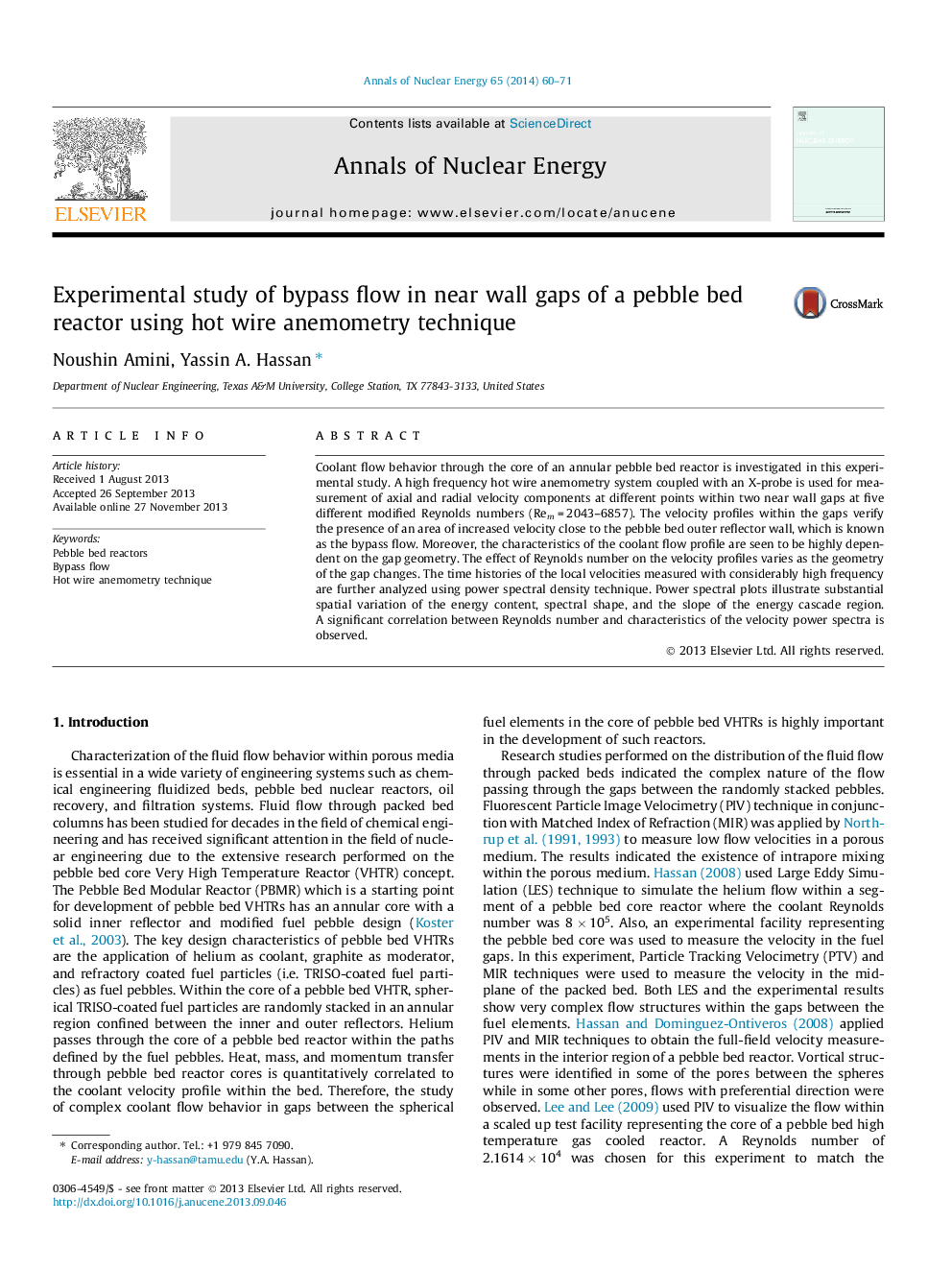| Article ID | Journal | Published Year | Pages | File Type |
|---|---|---|---|---|
| 1728400 | Annals of Nuclear Energy | 2014 | 12 Pages |
•Coolant flow behavior in near wall gaps of a pebble bed reactor is studied.•Hot wire anemometry is applied for high frequency velocity measurements.•Bypass flow is identified within the velocity profiles of near wall gaps.•Effect of gap geometry and Reynolds number on bypass flow is investigated.•Variation of velocity power spectra with radial location and Reynolds number is studied.
Coolant flow behavior through the core of an annular pebble bed reactor is investigated in this experimental study. A high frequency hot wire anemometry system coupled with an X-probe is used for measurement of axial and radial velocity components at different points within two near wall gaps at five different modified Reynolds numbers (Rem = 2043–6857). The velocity profiles within the gaps verify the presence of an area of increased velocity close to the pebble bed outer reflector wall, which is known as the bypass flow. Moreover, the characteristics of the coolant flow profile are seen to be highly dependent on the gap geometry. The effect of Reynolds number on the velocity profiles varies as the geometry of the gap changes. The time histories of the local velocities measured with considerably high frequency are further analyzed using power spectral density technique. Power spectral plots illustrate substantial spatial variation of the energy content, spectral shape, and the slope of the energy cascade region. A significant correlation between Reynolds number and characteristics of the velocity power spectra is observed.
